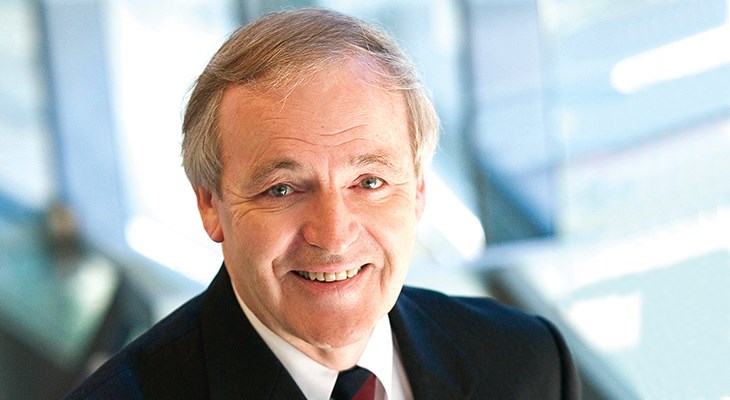Thirty years ago, 28 technology companies were worth at least $1 billion, says Jay Hoag, founding general partner at TCV and keynote speaker at the Michigan Private Equity Conference.
“Fast forward to today, and there are over 800 companies worth at least $1 billion,” Hoag said during his presentation. “If you add them all up, that’s over $12 trillion in market cap. When you take great technology fundamentals and you succeed as a tech company, you are able to build a sustainable franchise and get into that elite group. As a technology investor, we wake up each morning trying to identify future members of that club.”
More than 200 University of Michigan alumni and members of the private equity, investment banking and business community return to Ann Arbor each fall for the conference. The chance to reconnect with former students like Hoag brings event founder and U of M Professor David Brophy great joy. But his primary purpose in holding this conference and the Midwest Growth Capital Symposium, which is held each spring, is to spur private equity investment.
Ideally, he’ll shine light on one of those untapped investment opportunities that can become the next member of the billion-dollar business club.
Creating opportunity
This year was the 14th annual Michigan Private Equity Conference. In 1980, Brophy created the Michigan Growth Capital Symposium, now known as the Midwest Growth Capital Symposium. The private equity event focuses on panel discussions and networking opportunities for those involved in sourcing and negotiating deals. The growth capital conference showcases Midwest companies seeking seed, Series A and Series B rounds of funding and attracts top-tier investors from across the U.S.
“The idea of both of conferences is that, as one of the speakers said, we don't have enough funds,” Brophy says. “The funds we have are not large. What we’re missing here is the institutional and corporate money, which is very limited in its participation. That’s the gentlest way I can put it. For a state that needs it and that has great resources, we could almost hand people an airplane ticket along with their graduation certificate because so many of them leave. We’ve got to find a realistic way to motivate them to stay.”
The Midwest Growth Capital Symposium has made some headway in this effort.
“We’ve now done 2,000 companies through that program,” Brophy says. “You could probably account for well over $1 billion of money that’s been raised. It doesn’t sound like much in this day and age, but they were all young companies when they came to the symposium. We have these conferences and bring people back to see what progress we're making and to meet people and establish contacts here. It’s not gigantic, but it’s personal. Everybody in this room can meet everybody else if they want to.”
Real-world experience
While he can’t change the past, Brophy does reflect on how he and his peers perceived Southeast Michigan’s economic future.
“We were fat and happy because we had the biggest manufacturing pod and it was going to last forever,” Brophy says. “Well, it didn’t, and we were late to the party with respect to technology, even though we had the greatest store of tacit knowledge and understanding here in Michigan. As a result of the downturn and the loss of share in our major industry, we’ve lost those people, and they don’t easily come back.”
He firmly believes that institutions such as the University of Michigan, Michigan State University, Wayne State University and the University of Detroit Mercy can serve a pivotal role in driving investment in the region.
Brophy teaches a class called Financing Technology Commercialization — A Venture Capital Hands-on Challenge. It’s a chance to prepare and pitch an emerging growth company to venture capitalists who are focused specifically on the class.
“The idea in that class is to have students work with a real company where the butter and egg money is at risk,” Brophy says. “They learn and they see the ups and downs, the ins and outs, and learn to write a business model. They learn to write a business plan. It’s not in some cliché-ridden academic setting. This is the real deal where it has to work.”
The last session had 28 venture funds take part and listen to pitches.
“We usually have 14 or 15 companies each year and anywhere from three to five successful investments within three or four months after they get out of the class,” Brophy says. “So you keep pounding.”




